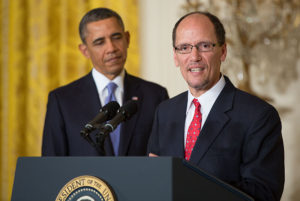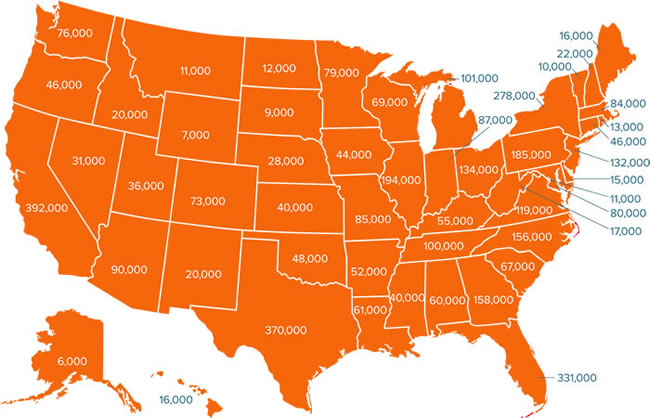
HR attorney: Most body shops probably have at least one worker affected by OT rule, take opportunity to review pay before Dec. 1
By onBusiness Practices | Education | Legal
Most collision repairers probably have at least one salaried worker who’d be eligible for overtime under new federal rules taking effect Dec. 1, an auto body shop human resources attorney said Wednesday.
For shops properly classifying employees under the existing law, it likely would be just “one, maybe two people in the shop” — but there’d still be an impact, Fine, Boggs & Perkins partner Cory King estimated Wednesday. “It’s going to affect every shop to some degree, but not huge,” he said.
Of course, for any shop not correctly classifying employees, the impact could be far greater.
King urged employers to take the regulation announcements this week as an opportunity to review employee pay structures to avoid lawsuits later.
“From my perspective of wanting employers to be in compliance, this is a good thing, because it’s hopefully going to make every shop assess and evaluate whether they are properly classifying somebody as exempt, and whether they want to continue to do so,” he wrote in an email.
Under the new rule, announced Tuesday by Democratic President Barack Obama White House and outlined Wednesday by Secretary Thomas Perez’s Department of Labor, anybody on salary making less than $47,476 a year gets time-and-a-half pay for exceeding 40 hours in a workweek. The rule kicks in Dec. 1. (Find more detailed information on the DOL website here and register for educational webinars here.)
In the past, the threshold had been $23,660 — below the poverty threshold for a family of four in 2014.
King, who is based in San Diego, noted an interesting twist: “This is even going to affect California shops,” which in the past had a far higher salary threshold to qualify for the exemption — twice the state’s minimum wage for a 2,080-hour work-year.
At the current $10/hour state minimum wage, the threshold in California is $41,600, which for the first time in King’s 20-plus years of experience makes the state playing catch-up on this issue to the feds.
Making more than $47,476 doesn’t automatically exempt an employee from drawing overtime, just as it didn’t for salaried workers making $23,660 or more. One with a salary at or beyond the threshold must also satisfy a “duties test” to qualify for one of the white-collar exemptions.
“Anybody that has been treated as exempt from overtime under state or federal law has always had to meet a duties test and a salary basis test,” King wrote in an email. “… One of the biggest misnomers has always been that just paying a salary makes an employee exempt from overtime.”
The new regulations don’t change any federal rules and exemptions related to the piece-rate pay structure used by many technicians.
In response to employer concerns, the government did keep the “duties” test the same and let bonuses and commissions count toward up to 10 percent of determining if a worker reaches the salary level.
The “duties test” portion of the exemption is a more complicated issue — though a crucial one — and we will revisit it in greater depth soon with King. Today, we’ll just talk about wages and the salary portion of the test for exemption.
 King predicted that some shops would simply shift salaried staff to hourly and set the hourly rate at a level that results in roughly the same total compensation to the employee as their prior exempt salary, rather than pay more to maintain the exemption or cut hours to 40 as the government had hoped.
King predicted that some shops would simply shift salaried staff to hourly and set the hourly rate at a level that results in roughly the same total compensation to the employee as their prior exempt salary, rather than pay more to maintain the exemption or cut hours to 40 as the government had hoped.
For example, a $30,000 salaried exempt employee working 50 hours a week who is now no longer exempt could be shifted toan hourly wage of roughly $10.50/hour, which presuming the employee continues to work the same number of hours per week would result in annualized compensation of about $30,000.
Of course, if an employee works 51 hours, then he or she will earn an extra hour at time-and-a-half, one of the things the rule change was meant to address. But the opposite is also true, if the employee works less than 50 hours per week then they will end up receiving less than their prior $30,000 annual salary.
“Wise employers are going to do the math, figure it out and set the hourly wage at an affordable rate based on a reasonable estimate pulled from the number of hours that’s currently being worked,” King wrote in an email. Increasing salaries just to try and keep someone exempt probably isn’t financially feasible for many shop owners, he predicted.
Of course, if an employee works 51 hours, then he or she will earn an extra hour at time-and-a-half, one of the things the rule change was meant to address. But if the empoyer
“You as an employer are now going to have to be more vigilant to control the number of work-hours that your employees are working.”
As part of the review of employee compensation, King urged all owners to talk to an attorney specializing in wage-hour law and the complexities of auto repair, and to have a written compensation plan in place for all employees.
If you would like additional information about these issues, contact Cory J. King of Fine, Boggs & Perkins LLP at 760-891-1240 or cking@employerlawyers.com.
More information:
Department of Labor, May 2016
DOL, May 2016
White House, May 17, 2016
“Taking Action to Expand Overtime Protections”
White House, May 17, 2016
Images:
Then-Justice Department Civil Rights Division leader Thomas Perez speaks March 18, 2013, after being announced as Democratic President Barack Obama’s nominee for secretary of labor. Both men touted a new overtime rule this week. (Pete Souza/Official White House Photo)
This May 2016 Department of Labor map indicates the number of workers expected to be affected by a new salary overtime rule. (Provided by Department of Labor)
Collision repair employment law specialist Cory King. (Provided by Cory King)

